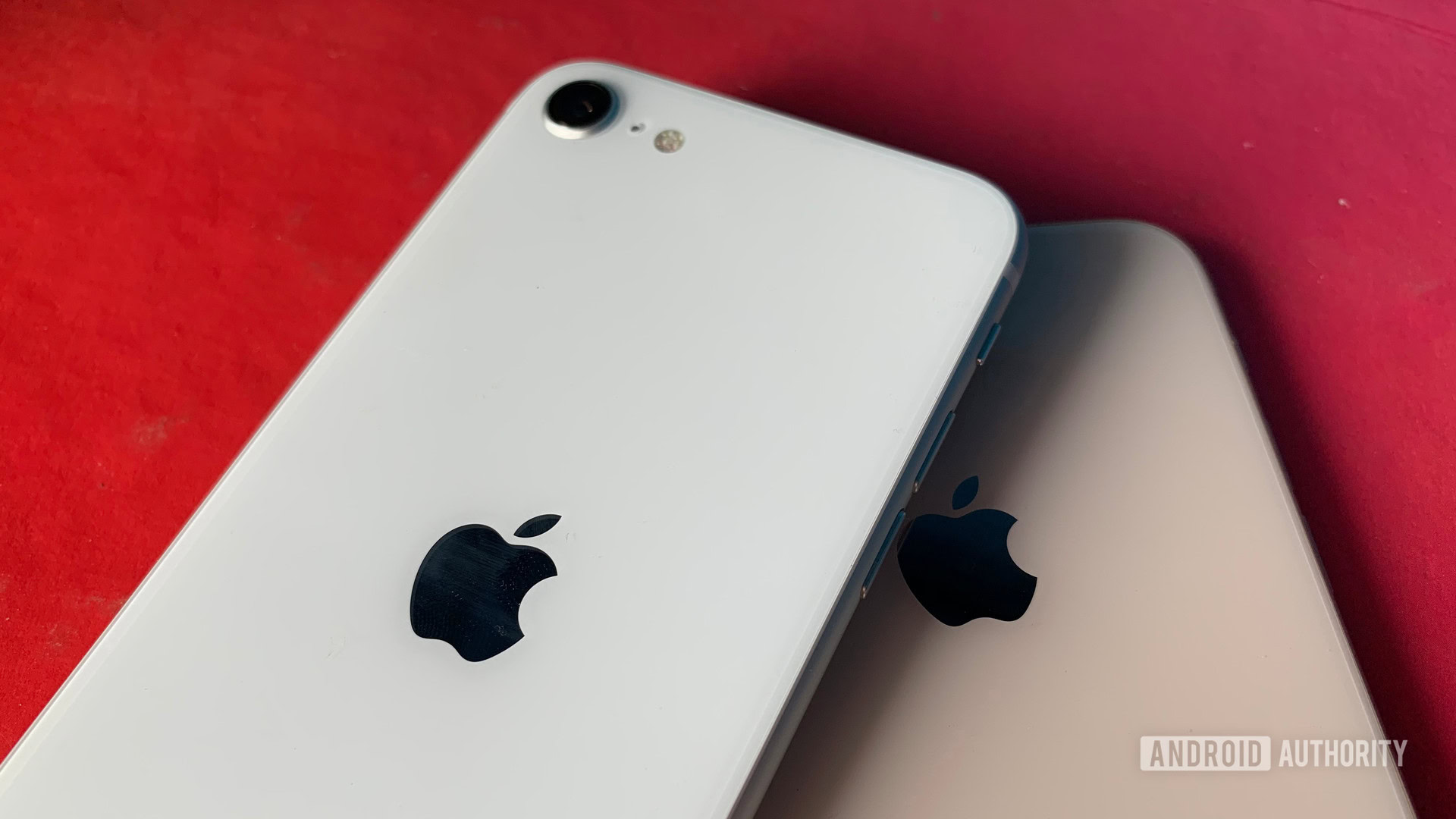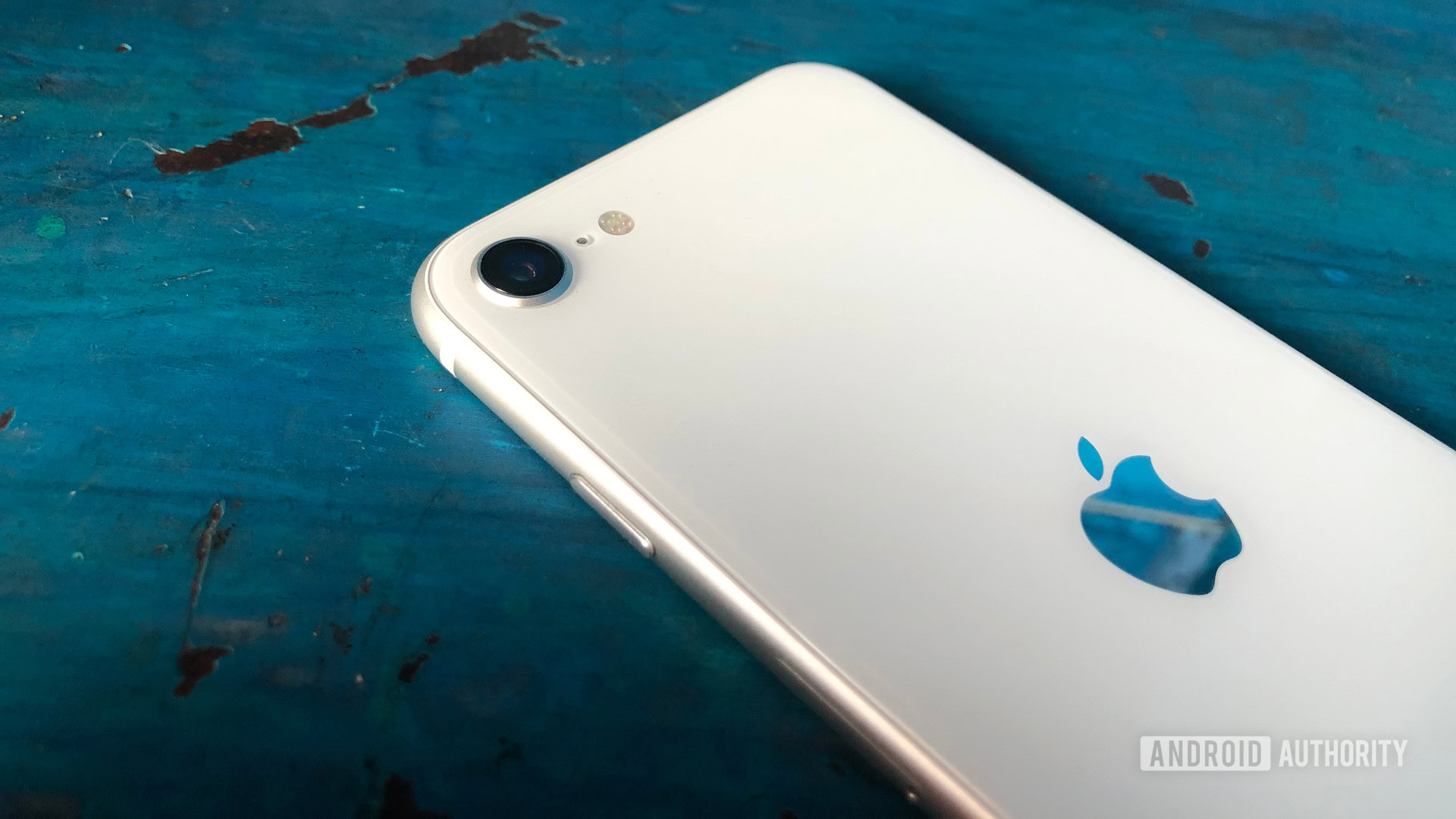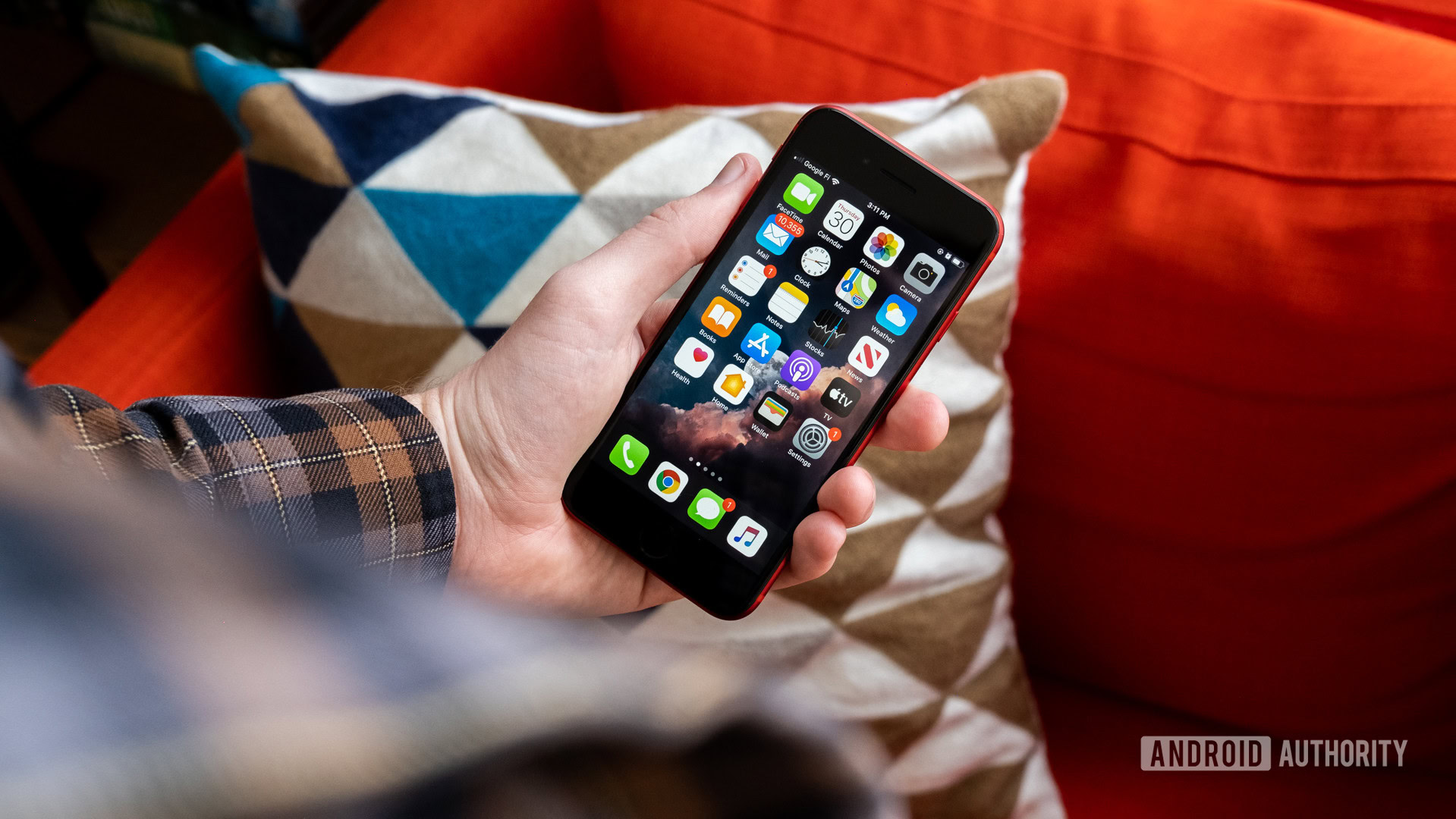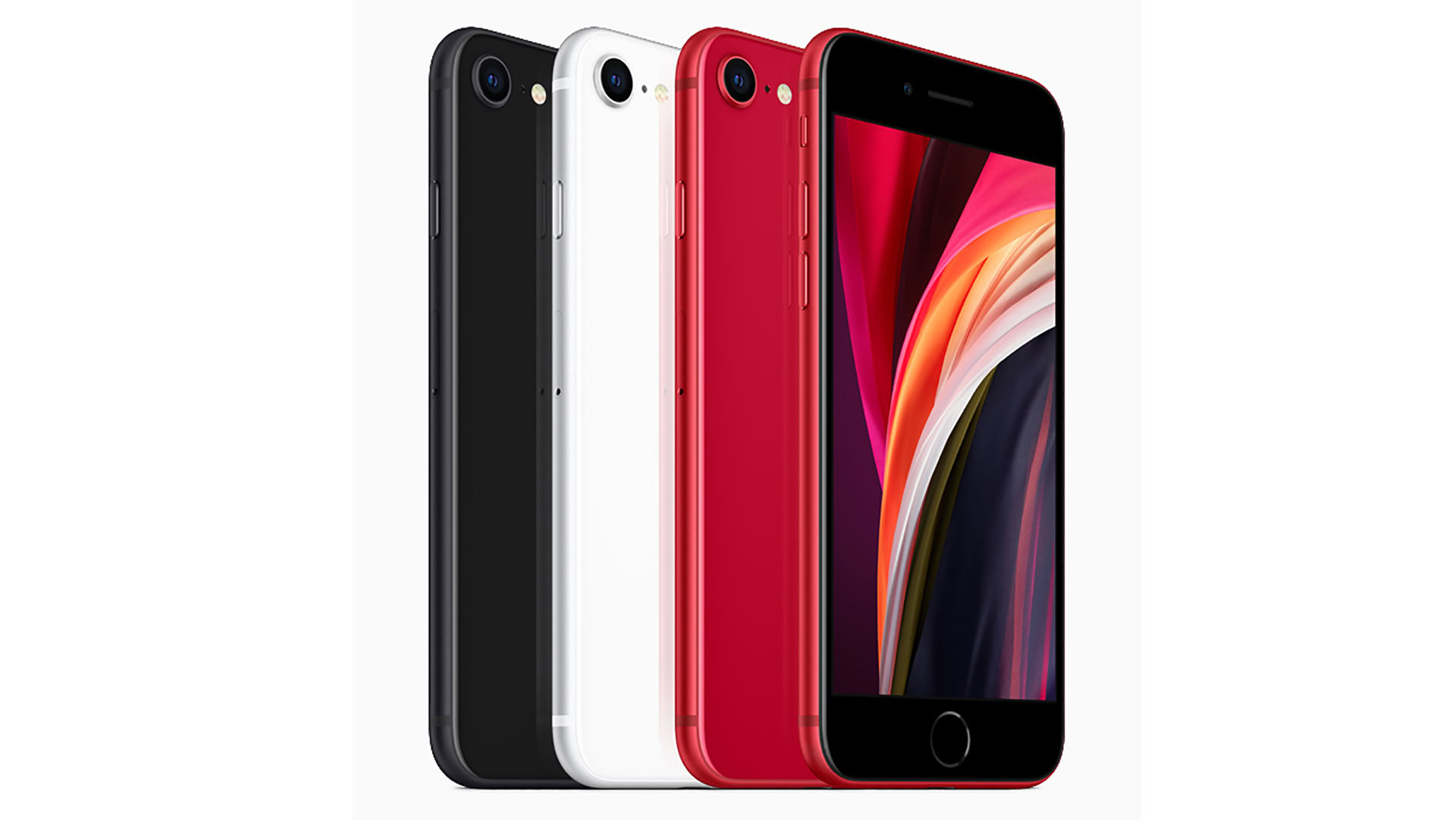Affiliate links on Android Authority may earn us a commission. Learn more.
iPhone SE (2020) vs iPhone 8: Battle of the budget iPhones

Apple’s original iPhone SE was a breath of fresh air when it launched. The small iPhone was highly revered not just because of its affordable price tag, but also for its pocketable size, at a time when Apple’s top-of-the-line iPhone 6S Plus measured 5.5 inches.
For years, Apple users have waited for an iPhone SE successor. But after the iPhone 7, subsequent iPhones kept getting taller and pricier. For a while, it seemed like Apple had put the iPhone SE out to pasture, but thankfully that wasn’t the case. Apple launched the new iPhone SE in April 2020. It brings with it the spirit of the iPhone 8 and the heart of the iPhone 11.
Let’s take a quick look at the iPhone SE vs iPhone 8 and see why it makes sense to buy one compact, budget iPhone over the other.
iPhone 8 vs iPhone SE: Specs that matter
| iPhone SE vs. iPhone 8 | ||
|---|---|---|
| iPhone SE vs. iPhone 8 Specs | iPhone 8 | iPhone SE |
| iPhone SE vs. iPhone 8 Display | 4.7-inch IPS LCD display 1334 x 750p resolution 16:9 aspect ratio 3D Touch | 4.7-inch IPS LCD display 1334 x 750p resolution 16:9 aspect ratio Haptic Touch |
| iPhone SE vs. iPhone 8 Touch ID | Physical home button with integrated fingerprint sensor | Physical home button with integrated fingerprint sensor |
| iPhone SE vs. iPhone 8 Processor | A11 Bionic chip 2GB RAM | A13 Bionic chip 3GB RAM |
| iPhone SE vs. iPhone 8 Rear camera | Single 12MP f/1.8 Optical image stabilization True Tone flash | Single 12MP f/1.8 Optical image stabilization True Tone flash |
| iPhone SE vs. iPhone 8 Selfie camera | 7MP f/2.2 | 7MP f/2.2 |
| iPhone SE vs. iPhone 8 Storage | 64GB, 128GB | 64GB, 128GB, 256GB |
| iPhone SE vs. iPhone 8 Battery | 1,821mAh battery 15W fast charging Wireless charging | 1,821mAh battery 18W fast charging Wireless charging |
| iPhone SE vs. iPhone 8 Water resistance | IP67 rated | IP67 rated |
| iPhone SE vs. iPhone 8 Colors | Black, White, Gold | Black, Red, White |
| iPhone SE vs. iPhone 8 Connectivity | Single SIM | Dual SIM (nano SIM + eSIM) |
As you can see in the spec comparison above, the iPhone 8 and iPhone SE are almost identical until you come down to the very core of the two iPhones.
Apple’s latest compact king is powered by the 7nm A13 Bionic chip, up from the 10nm A11 Bionic processor you get on the iPhone 8 series. This one change makes all the difference.
Also read: Tested: Is a $400 iPhone SE really faster than the most powerful Android phone?
The iPhone SE’s A13 Bionic chip brings faster performance compared to the A11 Bionic. Right from opening and closing multiple apps, to taking screenshots, to simply navigating the UI, the difference in how the new iPhone SE handles day-to-day tasks in comparison to the iPhone 8 is extreme.
In fact, even in comparison to the larger iPhone 8 Plus with the same A11 Bionic processor, the iPhone SE shows a significant leap in performance.
To prove my point, I ran some benchmarks on both the iPhone SE and the iPhone 8. Not only did the SE complete all the benchmarks faster, but it also rendered them much more smoothly in comparison to the 2017 iPhone. See the benchmark results below.
| iPhone 8 Plus | iPhone SE | |
|---|---|---|
Antutu | iPhone 8 Plus 257920 | iPhone SE 352250 |
Geekbench | iPhone 8 Plus Single: 929 Multi: 2205 | iPhone SE Single: 1326 Multi: 2267 |
3D Mark | iPhone 8 Plus 2662 | iPhone SE 3582 |
Since the above benchmark comparison is with the iPhone 8 Plus, we can presume that the iPhone 8 would achieve similar numbers and hence underperform in comparison to the iPhone SE 2020.
Moreover, the 2020 iPhone SE also features Apple’s third-generation neural engine, which is way more powerful than the one on the iPhone 8. Case in point, the iPhone 8’s neural engine has a dual-core design whereas the iPhone SE’s neural chip has an eight-core structure.
Also read: What is an SoC? Everything you need to know about smartphone chipsets
Think of it as eight people doing the same task as two people. Not only will they be faster, but way more efficient. Overall, the iPhone SE’s neural chip is capable of one trillion operations per second, compared to 600 billion operations per second on the iPhone 8.
The same A13 processor and neural chip also power the Cupertino giant’s 2019 flagship iPhone 11 series. They are the reason why the new iPhone SE not only performs faster but also takes much better pictures with the same camera as the iPhone 8.
iPhone 8 vs iPhone SE: Camera

The second-generation iPhone SE has the same primary camera setup as the iPhone 8. On both phones, you get a 12MP sensor with f/1.8 aperture, phase detection autofocus, and optical image stabilization.
If you’re wondering what’s so great about a three-year-old camera, rest assured you won’t be disappointed. Thanks to advances in computational photography and the A13 Bionic’s signal processing, the iPhone SE easily beats the iPhone 8 in terms of photography.
Portrait mode
With its single-camera system and Apple’s neural engine-assisted software magic, the iPhone SE features a portrait mode that would otherwise need dedicated hardware such as a dual-camera system for depth mapping. But if we’ve learned anything from the Google Pixel series, it’s that a single camera can also do wonders.
The iPhone 8, on the other hand, doesn’t have the capability to take portrait mode shots at all. In fact, in my experience, the new iPhone SE’s portrait mode also outperforms the portrait mode offered on the iPhone 8 Plus. Given that the iPhone 8 Plus features a dual-camera system, that’s quite impressive.
As you can see in the comparison above, the iPhone SE gives you a higher level of background blur and sharper segmentation than the iPhone 8 Plus. The 7MP front camera on the iPhone SE also has ML-assisted portrait mode. However, it’s not as remarkable as the one on the rear shooter.
That said, the difference in the portrait mode on the iPhone 8 Plus vs the iPhone SE was only visible when clicking people. The SE can’t take portrait shots of objects or animals like the iPhone 8 Plus and that’s a bit disappointing.
More iPhone 11 camera features
Since the iPhone SE is a 2020 phone, it borrows a bunch of camera features from Apple’s latest flagships.
You get six portrait lighting effects on the iPhone SE: Natural, Studio, Contour, Stage, Stage Mono, and High-Key Mono (introduced with iPhone X). There’s no portrait mode on the iPhone 8 so it doesn’t have any of these lighting effects.
The SE also adds Smart HDR for better highlight recovery in photos. There’s also HDR, OIS, and stereo sound recording for videos. It even gets the iPhone 11’s QuickTake mode for recording videos from within the photo mode.
You can read more about the iPhone SE’s camera performance in our detailed iPhone SE 2020 review.
iPhone 8 vs iPhone SE: Size
In terms of size, the iPhone 8 and iPhone SE are identical. You get the same compact 4.7-inch IPS LCD True Tone display on both phones, with a 1,334 x 750 resolution. The typical brightness levels and wide color gamut also remain unchanged on the newer model.
Actually, the dimensions of the iPhone SE in comparison to the iPhone 8 are exactly the same: 138.5mm x 67.3mm x 7.3mm. Both phones weigh exactly 148 grams.
In a world where handsets are touching the 7-inch-display mark, the two iPhones are notable outliers. You’ll be surprised at the sudden comfort of single-handed use that washes over you when you switch from a large screen device to the iPhone SE or iPhone 8.
iPhone 8 vs iPhone SE: Price

The iPhone SE comes in at a price of $399 in the US. This is highly uncommon for an Apple phone which flaunts a flagship processor. This is what’s caused such a stir in the mid-range smartphone segment. Apple clearly has its sights set on the sub-$500 phone market and with the iPhone SE, it’s threatening even Android phones in that space.
In comparison, Apple has officially discontinued the iPhone 8. You might still be able to buy the phone from some third-party platforms but know that the older phone might not get the same software support compared to the 2020 iPhone SE.
If you were considering upgrading from a 7 series iPhone, then we suggest you go straight to the new iPhone SE.
Meanwhile, if you’re an iPhone 8 user, an upgrade to the iPhone SE 2020 will afford you blazing-fast performance, a highly-improved camera experience, and more software updates. You also get the same comfort of use, that physical home button you’ve come to love, wireless charging, and IP67 rating, all in a brand-new, more powerful package.
If you’re in the market for a new iPhone that doesn’t break your bank, the iPhone SE 2020 is the way to go.
